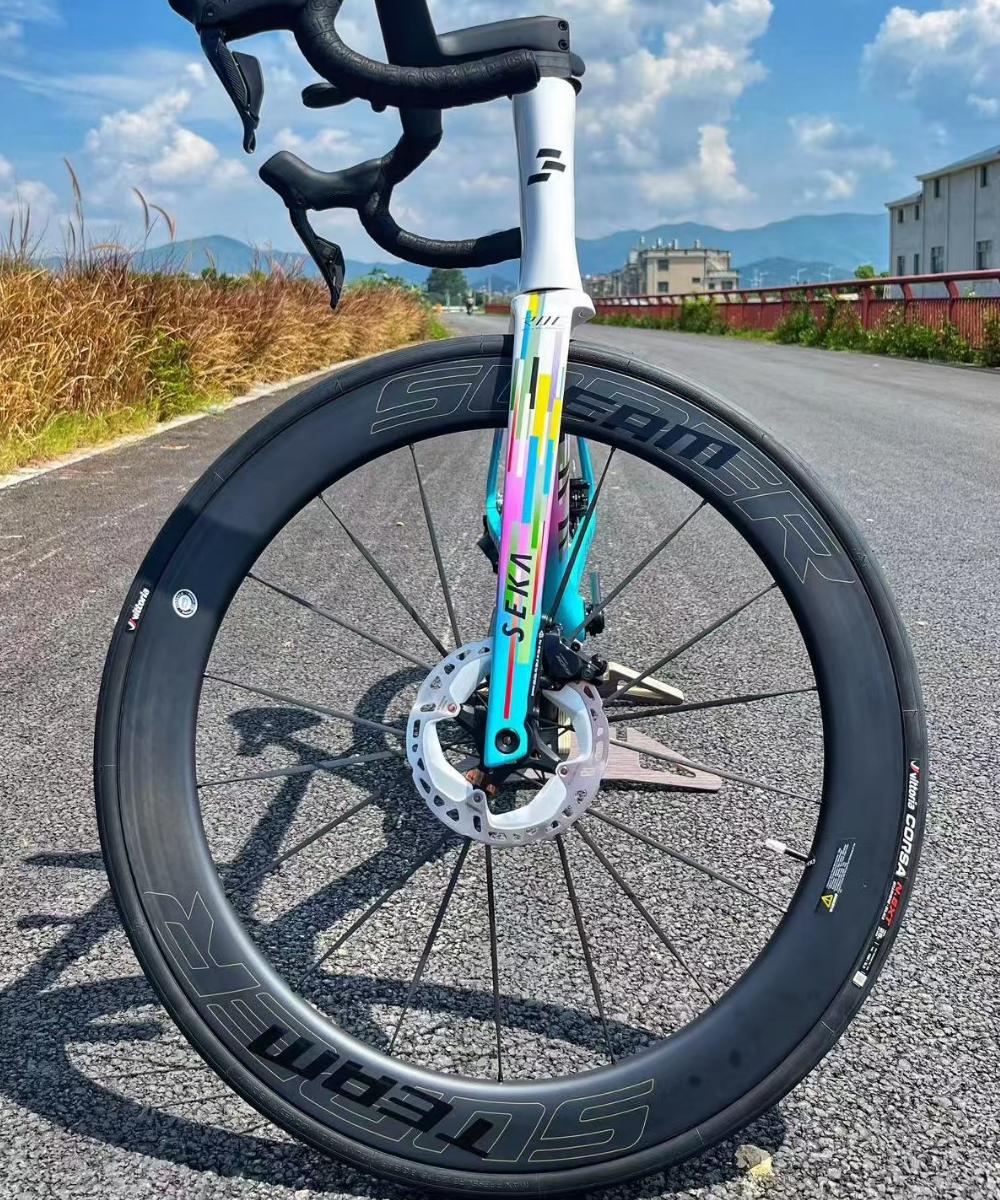Thermal Cycling in Carbon Wheels: Long-Term Fatigue Risks
Carbon wheels have revolutionized the cycling world, offering significant advantages in terms of weight reduction, aerodynamics, and stiffness. However, like any high - performance component, they come with their own set of challenges, one of which is the issue of thermal cycling and its associated long - term fatigue risks.
Understanding Thermal Cycling in Carbon Wheels
Thermal cycling refers to the repeated heating and cooling of a material. In the context of carbon wheels, this occurs during normal cycling, especially when brakes are applied. When you brake, the friction between the brake pads and the wheel rim generates heat. The carbon composite material of the wheel then absorbs this heat, causing it to expand. Once the braking stops and the wheel cools down, it contracts back to its original size.
This process is not a one - time event. During a long ride, especially on hilly terrains where frequent braking is required, the carbon wheels can go through numerous cycles of heating and cooling. Each cycle subjects the material to mechanical stress as it expands and contracts.
How Thermal Cycling Leads to Fatigue
Material Degradation
Carbon fiber wheels are made up of carbon fibers embedded in a resin matrix. The resin is the binding agent that holds the fibers together. High temperatures can cause the resin to break down over time. When the resin degrades, it loses its ability to effectively transfer loads between the carbon fibers. As a result, the individual fibers start to work independently, reducing the overall strength of the wheel.
For example, if the resin softens due to excessive heat during a thermal cycle, the carbon fibers may shift slightly. With repeated cycles, these small shifts can accumulate, leading to micro - cracks in the wheel structure.
Residual Stress Buildup
Every time the carbon wheel expands and contracts during thermal cycling, residual stresses are left behind in the material. These residual stresses act as internal forces within the wheel. Over a large number of cycles, these stresses can build up to a critical level. When the wheel is then subjected to normal riding loads, such as the impact of hitting a pothole or the force exerted during hard cornering, the pre - existing residual stresses can combine with the new loads. This combination can exceed the material's strength, leading to sudden and unexpected failure.
Fiber - Matrix Interface Weakening
The interface between the carbon fibers and the resin matrix is crucial for the wheel's performance. Thermal cycling can cause differential expansion and contraction between the fibers and the resin. This difference in behavior can lead to the development of small gaps or debonding at the fiber - matrix interface. As the number of thermal cycles increases, these gaps can grow, further weakening the structure of the wheel.
Real - World Consequences of Long - Term Fatigue
Safety Hazards
The most significant consequence of long - term fatigue in carbon wheels due to thermal cycling is the safety risk it poses to cyclists. A fatigued wheel may suddenly fail while in use, especially under high - stress situations like high - speed descents or heavy braking. This can result in loss of control, leading to serious accidents and injuries.
Reduced Performance
Even before a complete failure occurs, a fatigued carbon wheel will show signs of reduced performance. It may become less stiff, resulting in a loss of power transfer during pedaling. The wheel may also develop an uneven shape due to the micro - cracks and internal damage, leading to a rougher ride and increased rolling resistance.
Increased Maintenance and Replacement Costs
Cyclists may find themselves having to replace their carbon wheels more frequently if they are exposed to excessive thermal cycling. Additionally, detecting and addressing early signs of fatigue often requires specialized inspection equipment and expertise, which can add to the overall maintenance costs.
Mitigating the Risks
Proper Braking Techniques
Cyclists can reduce the amount of heat generated in their carbon wheels by using proper braking techniques. Instead of relying on hard, continuous braking, it is better to use gentle, intermittent braking. This spreads out the heat generation over a longer period, reducing the peak temperatures reached by the wheel.
High - Quality Braking Components
Using high - quality brake pads and calipers can also help. Some brake pads are specifically designed to generate less heat during braking. These pads can reduce the thermal stress on the carbon wheels, thereby minimizing the risk of long - term fatigue.
Wheel Design and Material Improvements
Wheel manufacturers are constantly researching and developing new materials and designs to improve the thermal resistance of carbon wheels. For example, some wheels now incorporate heat - dissipating layers or use advanced resin systems that are more resistant to high temperatures. By choosing wheels with these features, cyclists can reduce the long - term fatigue risks associated with thermal cycling.
In conclusion, while carbon wheels offer many benefits, cyclists need to be aware of the long - term fatigue risks associated with thermal cycling. By understanding the causes and consequences of these risks and taking appropriate mitigation measures, cyclists can enjoy the performance advantages of carbon wheels while ensuring their safety and the longevity of their equipment.




